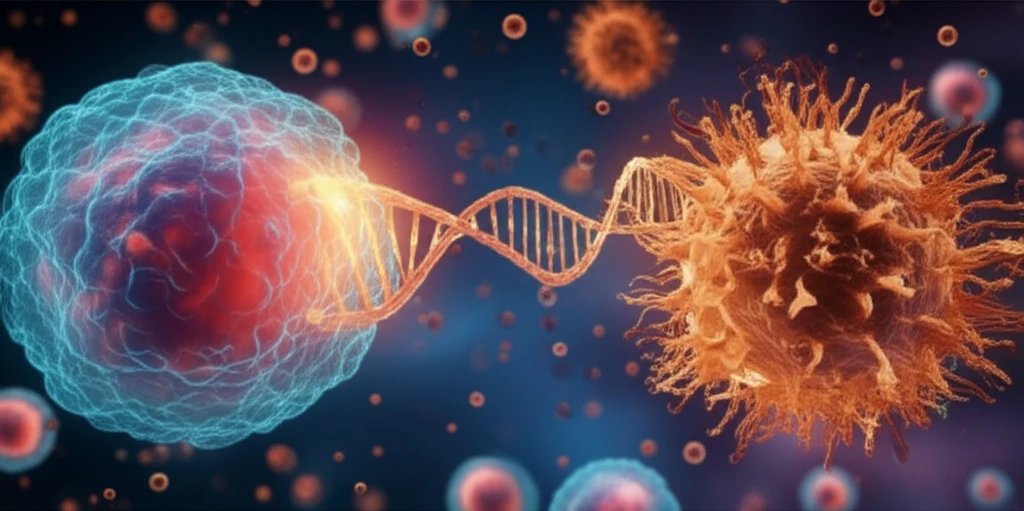
Cell-to-Cell Communication: How Microparticles Act as Messengers in the Body
"Unlocking the potential of microRNA signals for innovative therapies and diagnostics."
In the intricate world of cellular biology, communication is key. Cells constantly exchange information to coordinate functions, respond to stimuli, and maintain overall health. One fascinating method of cell-to-cell communication involves microparticles (MPs), tiny vesicles released by cells that act as messengers, carrying a variety of bioactive substances, including microRNAs (miRNAs).
MicroRNAs are small RNA molecules that play a crucial role in regulating gene expression. They can influence a wide range of cellular processes, including cell growth, differentiation, and apoptosis. When MPs transport miRNAs from one cell to another, they can alter the recipient cell's behavior and function.
Recent research has shed light on the significant role of platelet MPs in delivering a specific miRNA, miRNA-126-3p, to macrophages. This delivery modifies the macrophages' transcriptome (the complete set of RNA transcripts) and secretome (the collection of secreted proteins) and stimulates their phagocytic activity, which is essential for clearing cellular debris and pathogens. Understanding this intercellular communication could unlock new possibilities for diagnostic and therapeutic interventions.
How Do Microparticles Change Macrophage Behavior?

Macrophages, as key players in the immune system, are responsible for engulfing and digesting foreign particles, cellular debris, and pathogens. MPs, particularly those derived from platelets, interact significantly with macrophages. In fact, macrophages are largely responsible for clearing MPs from the body.
- Transcriptome and Secretome Modification: The introduction of miRNA-126-3p causes substantial changes in the macrophage's genetic machinery, leading to differential expression of 66 miRNAs and 653 RNAs.
- Enhanced Phagocytosis: The reprogramming of macrophages via platelet MPs pushes them towards a more active phagocytic phenotype, improving their ability to clear debris.
The Future of Microparticle Research
Despite significant progress, several questions remain about the intricacies of MP research. The specific determinants and regulatory factors that govern miRNA sorting and packaging into MPs are still not fully understood. Similarly, the precise targets and functions of transferred miRNAs, as well as the molecular mechanisms involved in their action within target cells, require further investigation.
However, unraveling these processes, especially the unique miRNA signatures within MPs and exosomes, presents a promising avenue for developing new diagnostic biomarkers. The ability to customize vesicles with specific sets of miRNAs opens the door to manipulating miRNA signals, potentially leading to innovative therapeutic strategies.
By understanding how cells communicate through microparticles and miRNAs, we can develop targeted therapies that address a wide range of diseases, from cardiovascular disorders to immune system dysfunctions. Further exploration in this field holds immense promise for improving human health.
